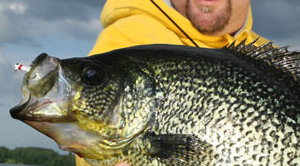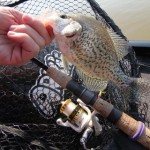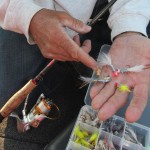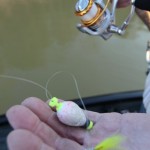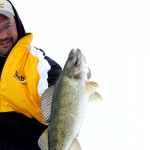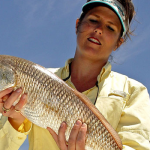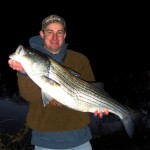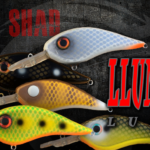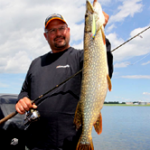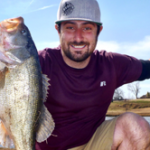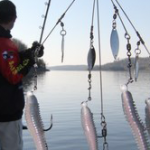By Brad Wiegmann
I want more. You want more. We all want more. More, more, more crappie. It’s not that we are greedy, but crappie sure taste good and they are fun to catch. Anyone can catch a few crappie out fishing, but to successfully put a limit in the livewell it takes more than luck. An angler has to know where the crappie are located and what lures will catch them.
Knowing the reproduction cycle of a crappie and how to present lures will put more crappie in your boat. It makes sense because you don’t want to be fishing deep, offshore structure when crappie are up shallow getting ready to spawn. Of course, the right lure in front of a crappie is going to get a bite.
A wise old crappie guide once told me that nothing beats a silver bullet. I was confused when he made that statement. Thinking the worst, I envisioned him pulling out a gun and shooting the fish.
His silver bullets turned out to be minnows. Silver side, lively minnows from the livewell purchased from the bait shop down the street.
It wasn’t just any minnows he would use. They were always the smallest ones he could get. It became apparent after fishing a few hours the smaller ones always caught more and sometimes bigger crappie.
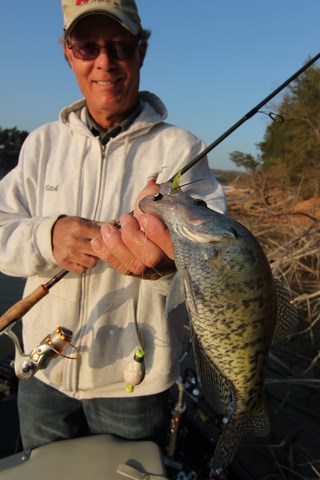 Live minnow can be put on a hook below a weighted bobber in the spring and casted around any brush or lay downs to catch crappie. Of course this set up is notorious for creating tangles and loops on the spool of spinning reels except on WaveSpin Reels with it’s guaranteed no tangle technology. Invented by Doug Hannon the “Bass professor” this reel eliminates tangles, loops or bird nests.
Live minnow can be put on a hook below a weighted bobber in the spring and casted around any brush or lay downs to catch crappie. Of course this set up is notorious for creating tangles and loops on the spool of spinning reels except on WaveSpin Reels with it’s guaranteed no tangle technology. Invented by Doug Hannon the “Bass professor” this reel eliminates tangles, loops or bird nests.
The Wavespin Reels also features a patented “Wave” spool with a wave design on the rim of the spool. So instead of coming off a smooth surface, the line coming off the spool jumps from peak-to-peak reducing friction. For anglers fishing with just a weighted bobber and minnow it results in longer casts without losing control over loops coming off the spool and tangling.
After the spawn, crappie will move off the bank to deeper habitat. Lay down or submerge brush piles are magnets for drawing in crappie. Casting jigs without a weight or bobber attached is a great way to catch them, however, the crappie have probably seen every jig. To catch them sometimes an angler has to alter the jig by adding something to the jig.
On Mark Twain Reservoir in Missouri, crappie guides have gone to fish jigs tipped with two Berkley crappie Nibbles on the shank of the hook just past the bend. Amazingly, the crappie just won’t bite a jig without it on. The jig with Nibbles are casted toward the lay down or brush and reeled back in slowly.
While Nibbles work on Mark Twain Reservoir, anglers should always be experimenting with different trailers, live bait or prepared bait on lakes or river they fish. It could be a combination of any that could help you catch more crappie.
Fishing with bobbers can also help you catch more crappie. One way is to point out a subtle bite indicating when to set the hook. Bobbers also make it easier to cast out a light jig or set lure depth.
A bobber and jig combination can be used throughout the year to catch crappie. A favorite combination with crappie anglers on Beaver Lake is Arkie Lures Shineee Hineee jig fished below a cork. Being a hair jig, the Shineee Hineee has more lifelike action even when suspended under a cork.
Pulling crappie out of brush and next to lay downs takes a superior drag system. An inferior drag system will not be smooth resulting in the line breaking or creating line twist. The WaveSpin Reel addresses the drag issue by having an extremely smooth yet superior clicking drag release system.
Size of the reel can also make a difference when casting lightweight jigs to lay downs or brush piles. A smaller WaveSpin like the Legend 250 is perfect for casting for crappie. At only 9.5-ounces, a crappie angler can cast and hold on to the rod all day long.
Once the crappie have gone to offshore structure it’s prime time for spider rigging for crappie. While many anglers scowl at spider rigging it’s truly one of the best ways to catch bigger and more crappie. Spider rigs allows crappie anglers to put out multiple rods with lures in a small space on the bow, stern or both.
When spider rigging the key area to fish is breaklines. Crappie use breaklines like roads or highways following it moving up to feed or down for protection. Another advantage to spider rigging is being able to put two lures on one line effectively without hanging up and catching multiple crappie at one time.
Utilizing the right line can also result in catching more crappie. Specialized lines like braid and fluorocarbon fishing lines have several advantages over monofilament fishing line. However, they do come with an increased cost to the angler, but it’s worth it to feel the subtle bites and put more crappie in you’re livewell.
![]()
Brad Wiegmann
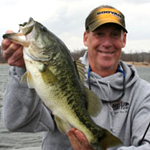
Online Contributor
Brad Wiegmann just wants to fish, but his wife told him to get a job so he works as a freelance outdoor writer and photographer when not fishing. Brad has written for countless magazines and websites, and been featured, which includes Arkansas Sportsman, Southern Outdoors, Outdoor Life, and Bassmaster. Besides being a freelance outdoor writer and photographer, Brad also has his own award winning website www.BradWiegmann.com.



